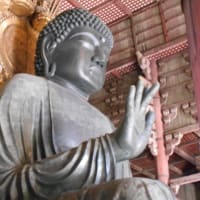
2 What was Spengler
Spengler is difficult to call a historian. In 1918, the work DIcline of the West had a similar relationship to history*1 as Nietzsche's Also sprach Zarathustra had to philosophy. Maybe. The work is more philosophical than historical. Spengler's morphology *2 seems to be a field of study that has the perspective of looking at how history changes over time. Spengler made an interesting point about the Western sense of time (a calculus image), but as a result, civilization was vitalistic and deterministic *3.
*1 Was Spengler a historian?
The historian Bernheim seems to include Spengler in the expressionist view of history in "What is history?" Spengler's concepts ``Faustian'', ``Magi-like'' and ``Apollonian'' were inspired by Nietzsche's ``Apollonian'' and ``Dionysian'' in ``The Birth of Tragedy''. It is thought that he was in the midst of the trend of "expressionist art" centered on Germany at the time of World War I. "The Decline of the West" is similar in position to Nietzsche's "Also Thus sprach Zuarathustra." It is questionable whether Spengler can be called a historian in the present age of 2018, but even though he influenced historical studies, Wallerstein of ``World System Theory'' was a ``sociologist'' and Braudel was a ``historian'' who wrote ``Markets, Capitalism, and Material civilization''. However, Germany or European civilization at that time seemed to be in a state of historical mental tension, and there may actually be much more things to be learned from this.
*2 Spengler's morphology
Spengler wrote that he was inspired by Goethe about the method of witnessing. Goethe was also a naturalist, and by contemplating the life of nature, he tried to master the essence of life. The same is true of human beings and society and this thought is reflected in many of his novels on human beings, the highly abstracted expression of "Faust", and probably the "Wilhelm Meister" series on society. It is said that Goethe drew the flow to the future here. It may be necessary to interpret Spengler's morphology based on this. The driving force that changed Spengler's form was "life", and it was the moral "ethics", a code of conduct that disregarded the profit and loss accounting rooted in "land" and "ethnicity". In a nutshell, Spengler's morphology is to learn the form of "moral" change. It may be possible to view it as just an analogy. Toynbee's criticism of Spengler therefore seems somewhat irrelevant. Toynbee believes that human history is not destined, but something that can be changed, and that the decline of the West and the organic theory of civilization are false. As such, there are various changes, but they will eventually die, and I believe that there is a process between birth and death. In any case, it may be said that there is a difference between the British way of doing things and the German way of doing things, but considering these two together is actually of great significance.
*3 Vitalism and determinism
According to Bernheim, Spengler's vitalist and expressionist positions came from Bergson and Husserl. The difference in interest from the present is probably that while Europe in the latter half of the 19th century was the age of physics, the 20th century was becoming the age of reaction to it. Spengler's determinism seems to be a simple derivative of vitalism, as I considered in *2, but what Toynbee criticized was that he asserted, like a prophet, that the West would fall in the 21st century. It must have been Spirit or morality was Spengler's lifeblood.
For example, Toynbee writes in `` Studiy of histry'' . He believes that the relaxation of tension caused by the establishment of the world state of society has caused the decline of human qualities.
"One of the cancers of modern human mental life is the reduction of mental tension, and all of us, with the exception of a select few, lead a relaxed life. Even at work, we find distraction. Even in
is quoted. In Toynbee's later years, too, interest turned to the energy that drives civilization, but Spengler intuitively asserted that life-based energy would one day run out. Therefore, one of the themes we will explore would be how spiritual energy changes in individuals and societies. I plan to think of it as 'Civilization and Value'.
Toynbee rejected Spengler's determinism. Toynbee studied various structures and functions that change history, but as a result, he believed that history did not progress deterministically. Whereas Spengler saw primarily the spirit (e.g. Christianity, rationalism, democracy, nationalism) as the driving force that drives history, Toynbee drew on the tradition of British empiricism and focused more on the secular. He may have seen the driving force in the power of *1. However, there seems to be little consideration of the energy that drives history, probably because he was a people in the country where the industrial revolution originated, perhaps because they were unable to become conscious of it. Spengler deterministically advocated the decline of Europe because he placed too much weight on its "spirit," whereas Toynbee rejected determinism by focusing on something other than "spirit" *2. It seems that it was because he did not clearly understand what it was.
*1 As mentioned above, Toynbee also mentions the tension of mental energy. In Toynbee's case, mental energy is not specified. In response to the challenges of the times, creative individuals and creative minorities emerged, which eventually relaxed and transformed into ruling minorities, within which the internal proletariat and external proletariat emerged. Toynbee does not seem to have used his own formula to explain how the Industrial Revolution occurred in England. However, it is possible to say that "the driving force in the world" is the spiritual energy that supports the response to the challenges of the times. And the challenges of the times are always mundane. In that sense, compared to Spengler's abstract energy view of vital energy aimed at the land and people, Toynbee's may be said to be secular.
*2 If Spengler's spirit is the feeling of life that is aimed at the land and the people, then the spirit of the people is finite, just like life. Even if it doesn't die, it may weaken. On the other hand, Toynbee finds a driving force in something other than the spirit, in the mundane, because history and environmental challenges collide with the vital feelings of the people, and history changes and develops by responding. This is probably because they think they will go. What is important here is the emergence of a creative minority in a wide range of genres and how the masses who imitate it (which Toynbee called mimesis*) will react. It does not mean that it is destined to decline because it exists, but it depends on how elements such as challenge, creative individual, creative minority, and response are involved as variables, and rather the relationship with the world.
All rights reserved to M Ariake


























※コメント投稿者のブログIDはブログ作成者のみに通知されます